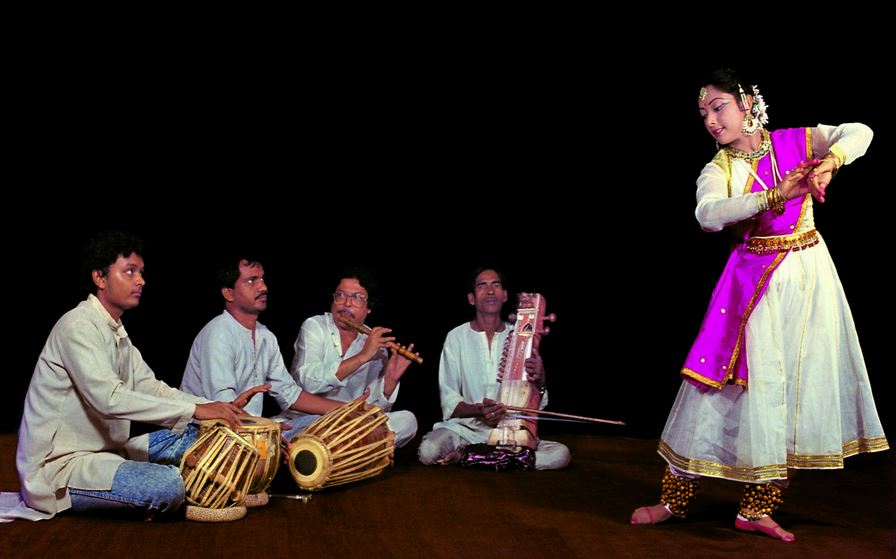Note4Students
From UPSC perspective, the following things are important :
Prelims level: Kathak
Mains level: NA

Kathak legend Pandit Birju Maharaj has recently passed away.
About Kathak
- Kathak is one of the eight major forms of Indian classical dance.
- The origin of Kathak is traditionally attributed to the traveling bards in of ancient northern India known as Kathakars or storytellers.
- The term Kathak is derived from the Vedic Sanskrit word Katha which means “story”, and Kathakar which means “the one who tells a story”, or “to do with stories”.
- Wandering Kathakars communicated stories from the great epics and ancient mythology through dance, songs and music.
Its origin
- Kathak dancers tell various stories through their hand movements and extensive footwork, their body movements and flexibility but most importantly through their facial expressions.
- It evolved during the Bhakti movement, particularly by incorporating the childhood and stories of the Hindu god Krishna, as well as independently in the courts of north Indian kingdoms.
- Kathak is unique in having both Hindu and Muslim gharanas and cultural elements of these gharanas.
- Kathak performances include Urdu Ghazals and commonly used instruments brought during the Mughal period.
Major gharanas
- Kathak is found in three distinct forms, called “gharanas”, named after the cities where the Kathak dance tradition evolved – Jaipur, Banaras and Lucknow.
- While the Jaipur gharana focuses more on the foot movements, the Banaras and Lucknow gharanas focus more on facial expressions and graceful hand movements.
Performance details
- It involves both Nritta (pure dance) and Nritya (expressive dance).
- Stylistically, the Kathak dance form emphasizes rhythmic foot movements, adorned with small bells (Ghungroo) and the movement harmonized to the music.
- The legs and torso are generally straight, and the story is told through a developed vocabulary based on the gestures of arms and upper body movement, facial expressions, neck movements, eyes and eyebrow movement, stage movements, bends and turns.
- The main focus of the dance becomes the eyes and the foot movements.
- The eyes work as a medium of communication of the story the dancer is trying to communicate. With the eyebrows the dancer gives various facial expressions.
- A Kathak performance can be solo, duo or team. In a technical performance, the speed and energy the dancers exchange with the audience increases in multiples, that is the tempo doubles or quadruples.
UPSC 2022 countdown has begun! Get your personal guidance plan now! (Click here)
Get an IAS/IPS ranker as your 1: 1 personal mentor for UPSC 2024
